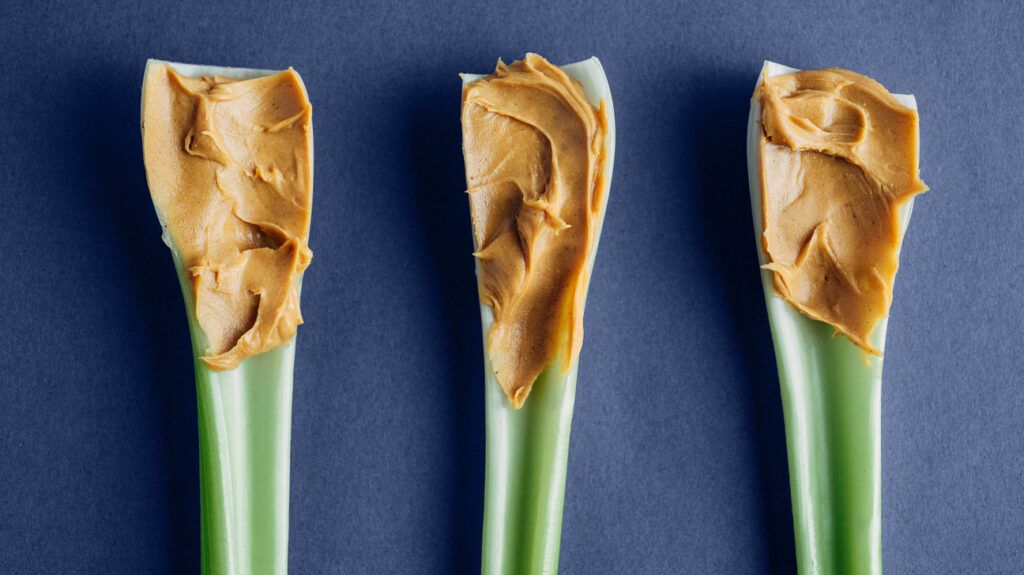Peanut butter provides nutrients that may help people with diabetes manage glucose levels. However, it can also be high in calories, and many brands contain added salt, fat, and sugar.

Some research suggests nuts may help manage type 2 diabetes by promoting weight loss, improving blood sugar (glucose), and regulating blood lipids, or fats.
Natural peanut butter and peanuts are low glycemic index (GI) foods. This means that when a person eats them, their blood sugar levels should not rise suddenly or too high.
A diet high in magnesium may also offer protective benefits against the development of diabetes. Peanuts are a high source of magnesium.
This article looks at how peanut butter might affect diabetes. It also explores any risks involved and suggests other nutritious snacks for people with diabetes.
The GI is a 100-point scale that ranks foods according to how blood sugar changes after eating specific food types.
Foods that digest slowly and release sugar gradually into the bloodstream have a lower GI score.
Peanuts have a GI score of 14, making them one of the lowest GI foods.
After eating a food that is high on the index, blood sugar levels will spike dramatically and quickly.
After this, a rapid fall in blood sugar can result in renewed hunger and tiredness.
These cycles of spiking and crashing blood sugar and insulin levels can negatively affect the body. They can contribute to the development of type 2 diabetes.
When consuming a carbohydrate, such as fruit or bread, pairing it with peanut butter can provide a nutrient-dense, balanced snack that keeps people satisfied for longer than just consuming the fruit alone.
A 2018 pilot study involving 16 healthy adults found that taking 2 tablespoons of peanut butter with white bread and apple juice led to a significantly lower glucose spike compared with taking only bread and juice.
Peanuts are a high source of magnesium. Many people with type 2 diabetes have low magnesium levels.
Scientists have suggested that supplemental magnesium might offer protection from type 2 diabetes by:
- improving insulin sensitivity
- reducing oxidative stress
- helping prevent systemic (whole-body) inflammation
Peanuts and peanut butter can provide dietary magnesium.
Everyone can benefit from eating foods that are rich in nutrients. Peanut butter provides protein and a range of vitamins and minerals.
- calories: 191
- protein: 7.1 g
- total fat: 16.4 g
- saturated fat: 3.3 g
- polyunsaturated fat: 4.0 g
- monounsaturated fat: 8.3 g
- carbohydrates: 7.1 g
- fiber: 1.6 g
- calcium: 15.7 mg
- iron: 0.6 mg
- magnesium: 53.8 mg
- phosphorus: 107 mg
- potassium: 179 mg
- sodium: 136 mg
- zinc: 0.8 mg
It also contains B vitamins, especially niacin and folate, vitamin E, and vitamin K.
The nutritional value of peanut butter depends on the type and brand. Fortified versions are also available.
Although research points to the benefits of eating peanuts for people with diabetes, there may be some risks involving the following:
Added sugar
Many store-bought peanut butter products contain added sugars. People with diabetes need to check the label and choose all-natural peanut butter. Low fat peanut butter may also contain more sugar than other varieties. Look for peanut butter that includes only peanuts and maybe some salt in the ingredients. People can also avoid peanut butter with added sugars and hydrogenated oils.
Fatty acids
Peanuts contain fat, including relatively high levels of omega-6. Omega-3 fatty acids tend to reduce inflammation, but having a higher ratio of omega-6 may increase it. According to a 2024 review, a high intake of omega-6 may cause an imbalance in the ratio of nutritious fatty acids and increase the risk of obesity and insulin resistance.
Calories
Peanut butter is a high calorie food. Eating it in excess amounts could contribute to obesity, which is a risk factor for diabetes and a worsening of the condition. People need to consume peanut butter in moderation and be mindful of the calories in each serving. One tablespoon of peanut butter contains
Peanut allergies
Some people have a peanut allergy, which can be serious and possibly life threatening.
Those who know or suspect they may have a peanut allergy need to speak with a doctor before consuming peanuts or related products.
Need for more evidence
Human studies on the effects of peanut butter have mostly been small and have not focused on people with diabetes. More evidence is necessary to understand the effects of peanut butter on diabetes.
Peanut butter contains essential nutrients and can be part of a nutritious diet for people with diabetes.
However, it is important to eat it in moderation, as it contains a lot of calories. Individuals also need to ensure their brand of peanut butter is not high in added sugar, salt, or fat.
Those with diabetes can work with a registered dietitian to identify their specific needs and learn how to best incorporate this healthy fat.


